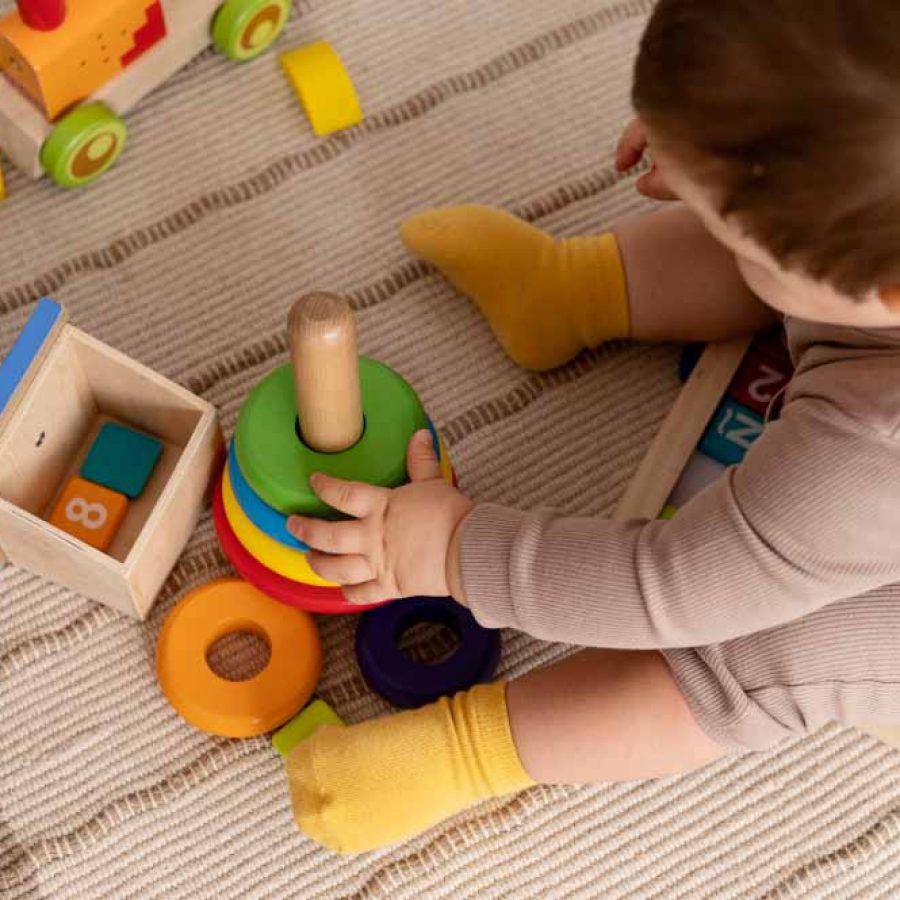We already know that all children are different, and this is meant to be celebrated. Respecting their individuality is the basic premise of one the world’s most famous educational methods, and we’ve got it covered here for you. Get ready to learn what Montessori is and its benefits for children!
To get a grasp of what this method means, the first thing you should know is that Montessori is all about self-leading and self-direction. This is a child-centered environment, all thought to encourage investigations so that kids learn while playing.
What Is Montessori And How Is It Applied In The Classroom?
Even with all differences considered between a Montessori classroom and a traditional one, education is still the main priority.
In Montessori, children are encouraged to use the classroom as they please, not necessarily being dependent on a teacher to make their own exploration and learn from it.
Children are incentivized to learn at their own pace, using designated materials to help them.
What Do Children Learn With Montessori?
Montessori is a special methodology of learning, but children are still following the same basic concepts as other students in traditional classrooms at a designated age.
This means that subjects such as science, social studies, language and math are part of the curriculum – as well as other topics, more focused on their practical life. While the classroom content is the same for everyone, not children learn the same. So they have the chance to explore the room and find what engages them the most.
By now, you might get the impression that a Montessori classroom can be too loud or disorganized, but it’s really the opposite.
There is still a hierarchy between teachers and students in a Montessori classroom. But instead of a room where children are taught to sit still and follow instructions in order to learn, they get the autonomy to decide what actually works for them.
Teachers are seen more as facilitators and supporters than an unquestionable authority figure.
How Is Montessori Different From Traditional Classroom Learning?
Other aspects that differentiate Montessori classrooms is the incentive to cooperation and socialization. The idea of installing competition between students like “you have to be the best student” has no room in a Montessory learning environment.
Speaking of the teacher: most of their time is spent with 1:1 sessions with students, instead of dictating content in front of them. Teachers observe the child’s learning process and present the right materials to complement their current advances.
The overall ambience of a Montessori classroom is respectful and inspires concentration. Children get to choose where to sit, which materials and subjects to work on, and explore the different variations of learning.
The classroom is still meant to be silent, as children understand that their own learning process can’t come in the way of their peers.
How Do Children Benefit From Montessori?
While growing true love for education is important, there are other positive takeaways that children get from Montessori.
- they grow self-confidence;
- they learn the value of cooperation;
- they grow a diverse vision of the world, because they see everyday that everyone has different needs and methods to learn;
- they develop holistically, not only academically: learning motor skills as well as developing emotional literacy is also a part of the Montessori perspective;
- they learn to respect a shared environment.
Inspiration For Montessori Learning At Home
At Amazing Explorers Academy, we believe that learning is a process that takes place anywhere, anytime. Creating an environment in which the children can feel stimulated and curious at home is just another way to complement their passion for learning.
Here’s how to do it:
- Regulate the height of items that your child will interact: this makes it simple for them to get the objects and also store them back after they’re done using it;
- Aim for independence: encourage self-dressing and putting away clothes by providing a low bed and dresser with drawers they can easily access to. Place a stool next to the sink to help them reach it and help with cleaning;
- Set the example: show your child how you approach your own chores and hobbies. Setting the tone and helping them get the first grasp of creativity and problem solving will certainly be inspiring;
- Make it simple: if your child has a hard time deciding what object to choose (whether it’s for playtime or house chores), you might want to cut down the options. Maybe cutting back a few choices will help your child make a decision and actually spend time doing what they’re meant to do.
Remember that, just as Montessori teachers, your role as a parent is not to set rigid rules and get in the way of your child’s learning process. Think of yourself as a guide, someone who opens doors instead of pushing your child to enter them.
Learning about what Montessori is can be really inspirational for all parents that want the best of their Young Ones. We believe that Montessori complements STEAM as educational methodologies and we see the benefits of this match on a daily basis! If you want to see it too, keep reading to learn what is necessary to find the best high quality preschool.


